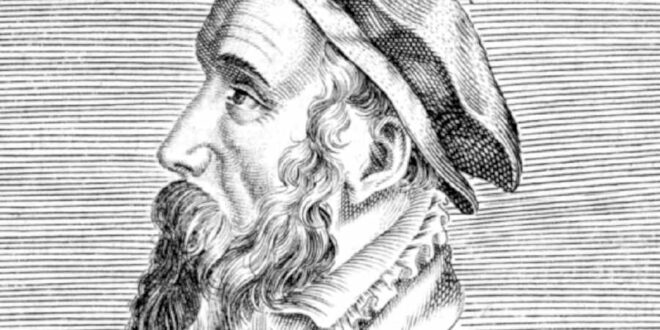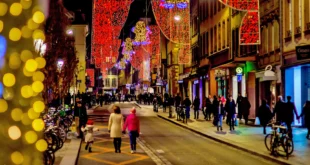Five centuries ago, all the paintings and artworks revolved mostly around one subject: God and only God. Almost every artist’s focus was on God and his glory as it is predicted. Then how and when did things take a turn?
More genres started evolving and other elements became subjects when artists like Pieter Bruegel the Elder decided to deviate from the norms. Around the 1550s (four and half centuries ago) Pieter Bruegel gained significance as a painter and printmaker.
An artist of Dutch and Flemish Renaissance, he was one of the pioneers who made landscapes and people (the everyday people) subject of his paintings and in this way differs from the other painters. In this article, we will discuss the masterpieces of Pieter Bruegel which shows people’s life and the mysterious painting of Two Monkeys. This article also will help you to understand the power of painting given to the mankinde by Pieter Bruegel.
Table of Contents
Pieter Bruegel About People
Even before Pieter Bruegel, humans were the subject of some artworks. But these were usually kings or honorable warriors or people who could order paintings from well-known painters and pay for it and never the common men. Pieter Bruegel chose to make peasants, children, and other ordinary people his subject.
He is known as a master of narration. His paintings are intricate with many people coming together in a scene and these were famously known as ‘busy pictures’. The meaning behind Pieter Bruegel’s paintings is never too obvious and one can interpret it in so many ways!
The Fight Between Carnival and Lent
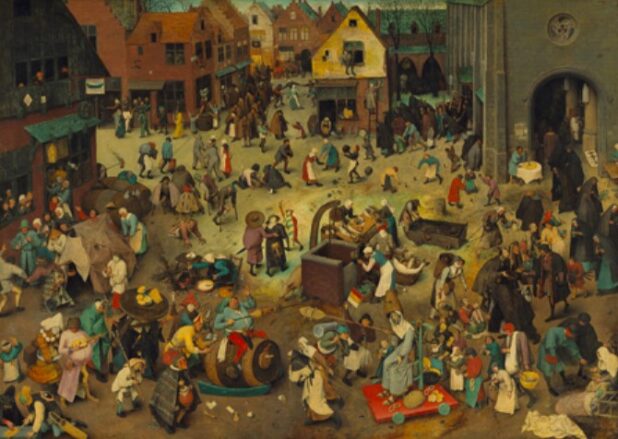
This amazing oil-on-panel work by Pieter Bruegel was done in 1559; it is considered to be one of the masterpieces created by Pieter Bruegel and given to future generations. The theme of the painting is a festival that was commonly celebrated in the Southern Netherlands during his time. But there is a stark contrast to what is happening between the left and the right half of the painting.
On the left side is merriment. As you see, there is an inn on the left side, people are drinking beer, musicians playing music (which probably was accepted at that time), and finally a man is holding a skewer of meat. This man is leading the carnival procession through the town’s market square. He is met by Lady Lent who leads a procession of her own with her followers giving alms to the poor and going to the church.
This, with all other kinds of people in the painting, depicts two ways of life – selfish enjoyment and religious path. But that is not all there is to it. There are so many other hidden symbolic meanings in the painting and it can be interpreted in many ways! We could sourly say that this painting is a mysterious one, as it is full of symbols and hidden messages.
The Netherlandish Proverbs
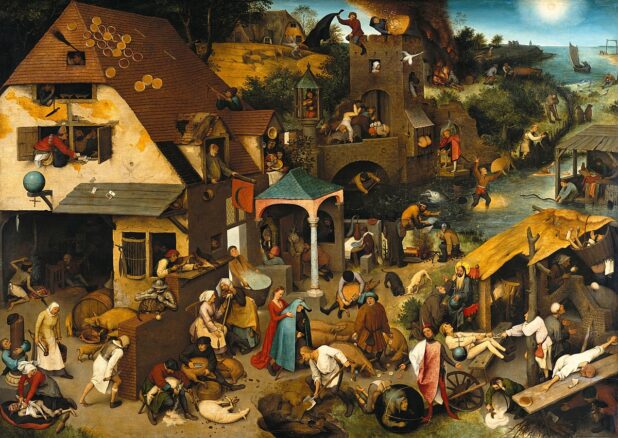
This is a brilliant depiction of many Dutch-language proverbs and idioms. At first sight, it looks like random senseless scenes. All the characters of the painting are involved in activities that are strange or outright insane. Only the ones who are familiar with the proverbs can understand the painting. Like in many other paintings of his, the theme is around the foolish and evil nature of humans. You can notice the blank features he gives the characters which are his way of depicting fools.
We have already mentioned that painting is mysterious, so there are more than a hundred proverbs and idioms hidden in the painting. This makes it a piece that deserves long contemplations rather than a glance while you pass by. While you should take your time to study all the proverbs, I am going to start you with a few of them. Below you could find the mail idioms and proverbs, study their meanings and if you find it interesting you could go into more details.
“To be a pillar-biter.” It means being a religious hypocrite.
“Shear them but do not skin them.” – When you have an advantage, don’t push it too far.
“Leave at least one egg in the nest” – Never fully empty your reserve.
“To fall through the basket” – Said when someone’s deception is figured out.
The Two Monkeys
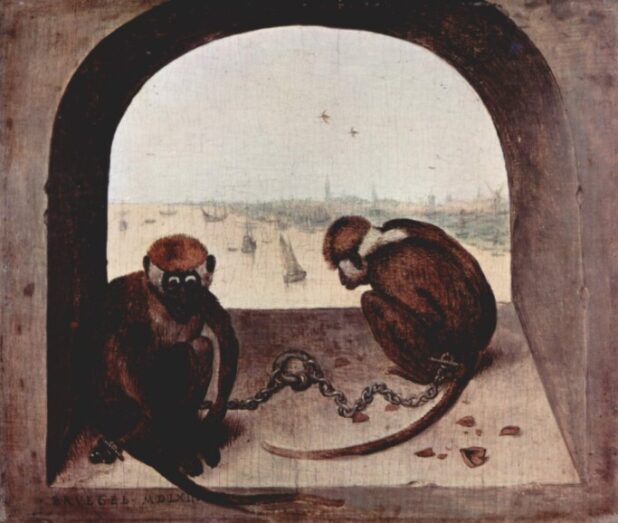
Out of all his masterpieces, one curious small painting got so much attention and perusal in the art world. It was of two monkeys sitting on what looks like a stone window overlooking the shore. Every painting of Pieter Bruegel has an underlying meaning, sometimes many. But there is so little information and consensus on his idea behind this painting. So many artists and art historians have tried to decipher the meaning of it.
As you can see, the subjects of the painting are two white collared monkeys in the foreground. Beyond in the busy port of Antwerp (City in Belgium). The monkeys are chained to the archway and appear to have lost any hope for freedom.
The painting is seen as an allegory and many interpretations have been made of it. Some say it is an illustration of the feeling of captivity and the hope of freedom that is common to all creatures. Some say this could be a portrayal of the artist’s misfortunes.
It has been observed that the monkeys are red-capped mangabeys that do not belong in the Antwerp port. The monkeys should have been brought in by animal traders. This could symbolize the oppression of the Flemish by the Spanish during that period.
It is also possible that Bruegel was inspired by “Adoration of the Magi”, a painting by Italian artist Gentile da Fabriano. Here the monkeys depicted the follies of man and how he chains others and himself from freedom.
Conclusion
Bruegel’s paintings are art to be pondered over. A reminder of the irrationality and idiocy that can swallow humans. So, these pieces will not only be an ornament on your wall but something more meaningful and deeper.
 World Magazine 2024
World Magazine 2024
